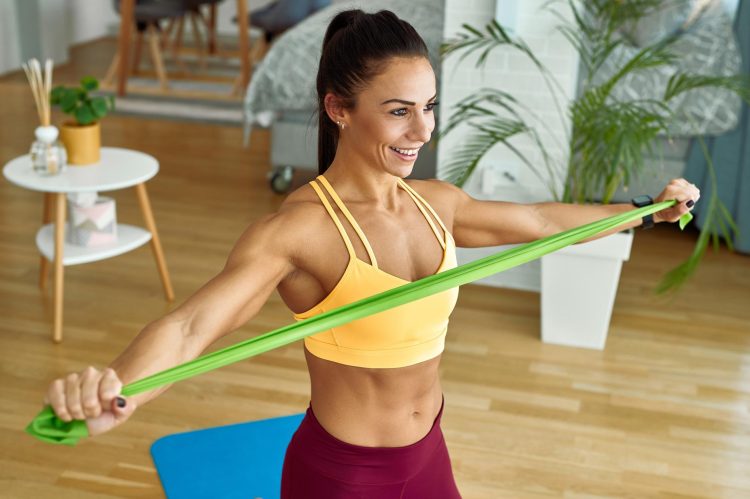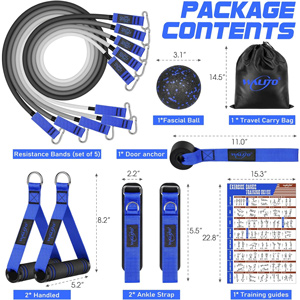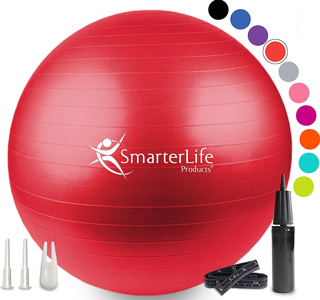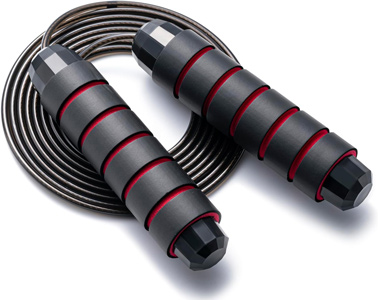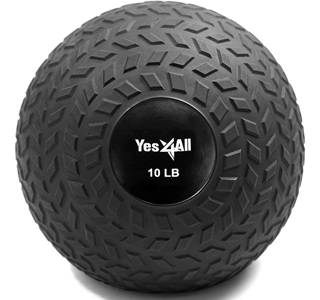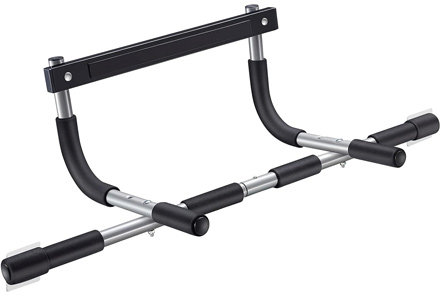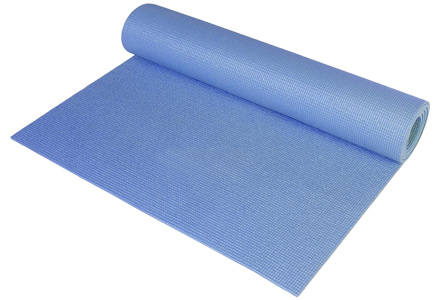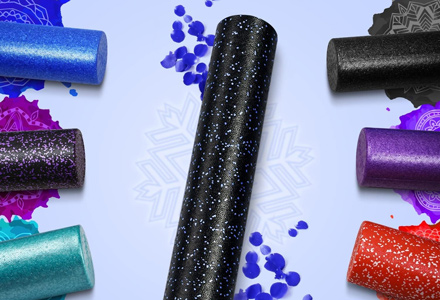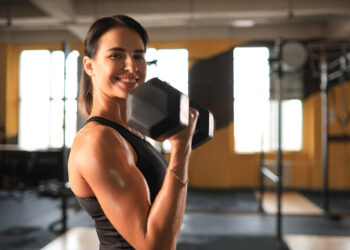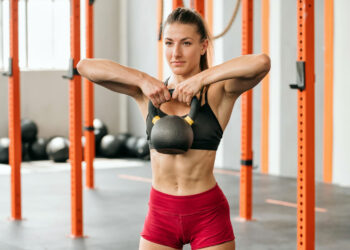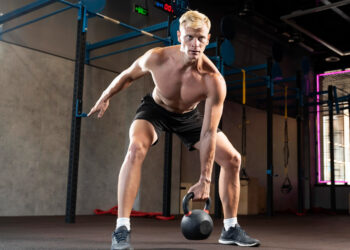As a seasoned personal trainer, I’ll be the first to admit that gym memberships can burn a hole in the wallet. However, fitness should be accessible to everyone and shouldn’t feel like a financial burden.
Home gyms can be an affordable way to stay active and healthy. A review of 17 randomized controlled trials found that home workouts can improve muscle strength, endurance, power, and balance. (1)
I love home workouts. I do them each week and work with online clients who train at home. Contrary to what most people think, you don’t have to convert your garage into a fully-decked-out home gym to make meaningful progress.
I have helped many of my personal training clients build a small functional home gym for under $100.
“A home workout can be just as effective as a gym workout, as long as you focus on cardio, resistance training, and progression,” said Dr. Mike Israetel (Ph.D. in Sports Physiology).
The $100 equipment listed in this article allows you to do all three to maximize your strength and muscle gains.
Level Up Your Fitness: Join our 💪 strong community in Fitness Volt Newsletter. Get daily inspiration, expert-backed workouts, nutrition tips, the latest in strength sports, and the support you need to reach your goals. Subscribe for free!
Furthermore, knowing that you are within 20 to 50 feet of your home gym increases your odds of sticking to your training regime. It also allows you to play your favorite music, wear what you want, and train with zero self-consciousness.
The Essential $100 Home Gym Equipment: A Personal Trainer’s Recommendation
You must begin with a plan to get the best bang for your buck on a limited budget. Then, consider all the different modalities that might be involved in your training plan to achieve your dream physique.
Here are seven personal trainer-recommended home gym equipment that are perfect for people who want to lose body fat and tone their physique:
Resistance Bands ($15)
Resistance bands are among the most versatile home gym training equipment. A pack of bands offers various resistance levels (light to extra-heavy), allowing better workout customization. Plus, they are compact enough to take with you while traveling.
You can use resistance bands to train virtually every muscle group. My favorite resistance band exercises include bicep curls, shoulder presses, lateral raises, squats, glute bridges, and rows.
Resistance bands can also be used as counterweights to make bodyweight exercises like pull-ups or inverted rows easier.
Check out the best resistance bands on the market!
Stability Ball ($15)
The stability ball is an underrated training tool. It can be used to improve core strength, balance, and posture. They can add an instability element to classic exercises like seated dumbbell presses or shoulder presses and force your core muscles to work harder.
I recommend beginners start with crunches on the stability ball to get used to the equipment. You can then include exercises like planks, hamstring curls, push-ups, and leg raises to challenge your core further.
Remember, safety should be your priority while performing stability ball exercises. Avoid copying exercise ball stunts pulled off by social media fitness influencers. For instance, barbell squats on a stability ball have more cons than pros.
Jump Rope ($5)
This is one of the best budget cardio equipment you can get. A five-minute jump rope training session can get you serious cardio benefits, improve coordination, and strengthen your calves, ankles, and feet.
As you get a hang of skipping rope, you should transition to more challenging variations like crossovers, double, or triple-unders. Alternate between rep and time targets to keep your workouts exciting.
The best thing about these training equipment is that you don’t need to dedicate a space to them in your living room or garage. They are portable enough to store them away after each training session.
Medicine Ball ($20)
A med ball is an incredibly effective tool for building power and explosive strength. Exercises like medicine ball throws and slams engage multiple muscle groups and can boost functional strength, which can improve your performance in day-to-day activities.
Pick a medicine ball that suits your fitness level and goals. Leather med balls are a better option if you’ll be doing a lot of throws and slams. Conversely, you should get a rubber med ball if you are into wall ball throws.
Level Up Your Fitness: Join our 💪 strong community in Fitness Volt Newsletter. Get daily inspiration, expert-backed workouts, nutrition tips, the latest in strength sports, and the support you need to reach your goals. Subscribe for free!
Pull-Up Bar ($25)
The pull-up bar is the best budget equipment for building a jacked back, core, and biceps. It also strengthens the entire upper body. I recommend getting a pull-up bar with multiple grip options, as it allows you to train your muscles from different angles and promote hypertrophy.
Intermediate exercisers should start with pull-ups and chin-ups. Beginners, on the other hand, can perform assisted pull-ups using a resistance band. Advanced lifters can overload the muscles with a dip belt.
Since we are working with a $100 budget, we cannot get strength training equipment like adjustable dumbbells, kettlebells, barbells, and weight plates. However, that doesn’t mean you must limit yourself to bodyweight workouts.
Combine multiple training equipment to maximize muscle stimulation and promote growth. In this case, you could anchor a resistance band to the pull-up bar and perform exercises like banded chest flyers, face pulls, and tricep pushdowns to boost hypertrophy.
Yoga Mat ($10)
In my opinion, a yoga mat is one piece of equipment you cannot skip in a home gym. Pick a yoga mat that has a non-slip surface and decent cushioning so your joints don’t dig into the floor.
A yoga mat can be used for floor exercises and stretching. I also use it for exercises like the floor dumbbell press. A yoga mat has broad utility. I use it for meditation and when I must sit or lie on the floor for various tasks, like fixing a bathroom cabinet.
Pro Tip: Whenever you have the option, go for a thicker yoga mat.
Foam Roller ($10)
Most people overlook recovery tools while building a home gym. According to a review published in the International Journal of Exercise Science, self-myofascial release techniques such as foam rolling can improve physical performance and recovery, increase joint range of motion by releasing tight muscles, and reduce delayed onset muscle soreness (DOMS). (2)
However, you must use the foam roller correctly to maximize its benefits. To avoid strains, never foam roll on the joints. You could also incorporate foam rolling into your routine before a workout to prep your muscles or post-training to kickstart recovery.
With this, ladies and gents, your $100 home gym setup is complete. This gear unlocks a vast range of exercises that can help train your entire body. Adjust the training intensity and stay consistent to maximize your results.
Expanding Your Budget Home Gym Arsenal
If you are planning to build a budget home gym, let me tell you this: No home gym owner stops after buying seven training equipment. With time, you will expand your exercise gear to add more variety to your workouts and prevent muscle and strength plateaus.
Here are five additional personal trainer-recommended budget training equipment worth $100 that should be on your watchlist:
- Ab Roller ($12): A specialty training tool to bias the midline. Ab rollers fully stretch out your core in the bottom position, maximizing muscle recruitment and gains.
- Suspension Trainer ($30): This versatile training equipment allows you to perform full-body workouts. You are limited by your own imagination while using this tool.
- Exercise Sliders ($8): These are primarily core training tools that take minimal space but deliver maximum results. They are low-impact training equipment suitable for people of all experience levels.
- Weighted Vest ($30): This should ideally be the first strength training-focused piece of equipment in your home gym. Wear it while performing exercises like squats, dips, and pull-ups to supercharge strength gains. You can also use it for endurance-based cardio workouts.
- Dip Belt ($20): This unassuming training equipment gives bodyweight exercises a whole new life. Consider buying a dip belt once you can start performing 15 bodyweight pull-ups with a picture-perfect form. However, you must also purchase other training equipment like dumbbells and weight plates with the dip belt.
Sample $100 Home Gym Workout
Here is a full-body workout to get the most out of your $100 home gym investment:
| Exercise | Sets | Reps |
| Jump Rope (Warm-Up) | 1 | 50 |
| Medicine Ball Slams | 2 | 10 |
| Air Squats | 2 | 10 |
| Resistance Band Chest Press | 2 | 10 |
| Resistance Band Side Lateral Raise | 2 | 10 |
| Pull-Ups | 2 | 10 |
| Resistance Band Curls | 2 | 10 |
| Resistance Ball Triceps Pushdown | 2 | 10 |
| Stability Ball Crunches | 2 | 10 |
| Lying Leg Raises | 2 | 10 |
After the workout, cool down with a five-minute foam rolling session to flush the lactic acid out of your muscles and start the recovery process.
Aim to complete the training session within 30 minutes. Keep the rest duration between sets limited to 45 seconds. However, you shouldn’t compromise training form in favor of intensity, as it can increase injury risk.
As you gain more experience, make the bodyweight exercises like push-ups, squats, lunges, calf raises, rows, inverted rows, and pull-ups more challenging by increasing the range of motion, number of sets and reps, reducing rest time or using additional resistance via weighted vests, resistance bands, or dip belts.
Due to budget constraints, we do not have any cardio equipment on this list. However, you don’t need fancy machines to get your heart rate up and burn calories. Exercises like mountain climbers, high knees, running, and walking outdoors can help you achieve your cardiovascular fitness goals.
Programming
Beginners can perform this workout two to three days a week. Intermediate and advanced exercisers can add variety by using exercise variations. However, they must aim for five to six weekly sessions.
The off days on this workout program are for active recovery, meaning you cannot spend your whole day on the couch. Perform yoga, meditation, or static stretches to burn additional calories. You could also pick outdoor activities like low-intensity running, hiking, or swimming.
Getting the Most Out of Your $100 Home Gym
Building a functional home gym doesn’t have to break the bank. Here is how to get the most out of your $100:
- Hunt For Bargains: You can buy everything listed in this article online. Most online marketplaces often run promos on gym gear. Timing your purchase can save you some serious bucks.
- Embrace the Used Market: Buying used dumbbells, barbells, and weight plates can save you a lot of money. Furthermore, gym equipment is pretty sturdy and can last you a lifetime.
- Quality: Although you must save money, you shouldn’t sacrifice quality while looking for a bargain. Avoid used equipment with cracks or other signs of wear and tear.
Conclusion
Although the home gym setup detailed in this article requires a $100 upfront investment, the return on investment over the years is invaluable. The equipment is portable and offers enough convenience and versatility to perform full-body workouts that deliver results.
Remember, consistency is key to achieving your training objectives. Stick to the workout listed above for at least 12 weeks, and the results will speak for themselves. As you gain more experience, add more equipment to your arsenal for continued progress.
Which other budget-friendly equipment should be on this list? Let me know in the comments section below.
References
- Chaabene, H., Prieske, O., Herz, M., Moran, J., Höhne, J., Kliegl, R., Ramirez-Campillo, R., Behm, D. G., Hortobágyi, T., & Granacher, U. (2021). Home-based exercise programmes improve physical fitness of healthy older adults: A PRISMA-compliant systematic review and meta-analysis with relevance for COVID-19. Ageing research reviews, 67, 101265. https://doi.org/10.1016/j.arr.2021.101265
- Ferreira, R. M., Martins, P. N., & Goncalves, R. S. (2022). Effects of Self-myofascial Release Instruments on Performance and Recovery: An Umbrella Review. International journal of exercise science, 15(3), 861–883.

